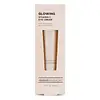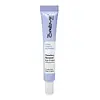What's inside
What's inside
 Key Ingredients
Key Ingredients

 Benefits
Benefits

 Concerns
Concerns

 Ingredients Side-by-side
Ingredients Side-by-side

Water
Skin ConditioningGlycerin
HumectantRosa Rugosa Flower Water
MaskingGlycereth-26
HumectantPolysorbate 60
EmulsifyingNiacinamide
SmoothingCetearyl Alcohol
EmollientPropylene Glycol
HumectantAcrylates/C10-30 Alkyl Acrylate Crosspolymer
Emulsion StabilisingTocopheryl Acetate
AntioxidantHydrogenated Palm Kernel Oil
EmollientArginine
MaskingChlorphenesin
AntimicrobialCitric Acid
BufferingGlycolic Acid
BufferingCetearyl Glucoside
EmulsifyingAllantoin
Skin ConditioningLactic Acid
BufferingAscorbic Acid
AntioxidantCaprylic/Capric Glycerides
EmollientCaprylhydroxamic Acid
1,2-Hexanediol
Skin ConditioningEthylhexylglycerin
Skin ConditioningDisodium EDTA
Phospholipids
Skin ConditioningPEG-20
HumectantGlucose
HumectantPhenoxyethanol
PreservativeWater, Glycerin, Rosa Rugosa Flower Water, Glycereth-26, Polysorbate 60, Niacinamide, Cetearyl Alcohol, Propylene Glycol, Acrylates/C10-30 Alkyl Acrylate Crosspolymer, Tocopheryl Acetate, Hydrogenated Palm Kernel Oil, Arginine, Chlorphenesin, Citric Acid, Glycolic Acid, Cetearyl Glucoside, Allantoin, Lactic Acid, Ascorbic Acid, Caprylic/Capric Glycerides, Caprylhydroxamic Acid, 1,2-Hexanediol, Ethylhexylglycerin, Disodium EDTA, Phospholipids, PEG-20, Glucose, Phenoxyethanol
Water
Skin ConditioningDipropylene Glycol
HumectantGlycerin
HumectantCaprylic/Capric Triglyceride
MaskingCetyl Ethylhexanoate
EmollientPropylene Glycol
HumectantCetearyl Alcohol
Emollient1,2-Hexanediol
Skin ConditioningNiacinamide
SmoothingButyrospermum Parkii Butter
Skin ConditioningGlyceryl Stearate
EmollientStearic Acid
CleansingSorbitan Sesquioleate
EmulsifyingPEG-100 Stearate
Polysorbate 60
EmulsifyingDimethicone
EmollientArginine
MaskingCarbomer
Emulsion StabilisingEthylhexylglycerin
Skin ConditioningTocopheryl Acetate
AntioxidantParfum
MaskingButylene Glycol
HumectantAdenosine
Skin ConditioningAllantoin
Skin ConditioningDisodium EDTA
Sodium Hyaluronate
HumectantHydrolyzed Collagen
EmollientAscorbic Acid
AntioxidantCarthamus Tinctorius Seed Oil
MaskingOlea Europaea Fruit Oil
MaskingRetinyl Palmitate
Skin ConditioningHelianthus Annuus Seed Oil
EmollientLactobacillus/Soybean Ferment Extract
Skin ConditioningSalix Alba Bark Extract
AstringentOriganum Vulgare Leaf Extract
Skin ConditioningPortulaca Oleracea Extract
Skin ConditioningChamaecyparis Obtusa Leaf Extract
Skin ConditioningScutellaria Baicalensis Root Extract
AstringentTocopherol
AntioxidantWater, Dipropylene Glycol, Glycerin, Caprylic/Capric Triglyceride, Cetyl Ethylhexanoate, Propylene Glycol, Cetearyl Alcohol, 1,2-Hexanediol, Niacinamide, Butyrospermum Parkii Butter, Glyceryl Stearate, Stearic Acid, Sorbitan Sesquioleate, PEG-100 Stearate, Polysorbate 60, Dimethicone, Arginine, Carbomer, Ethylhexylglycerin, Tocopheryl Acetate, Parfum, Butylene Glycol, Adenosine, Allantoin, Disodium EDTA, Sodium Hyaluronate, Hydrolyzed Collagen, Ascorbic Acid, Carthamus Tinctorius Seed Oil, Olea Europaea Fruit Oil, Retinyl Palmitate, Helianthus Annuus Seed Oil, Lactobacillus/Soybean Ferment Extract, Salix Alba Bark Extract, Origanum Vulgare Leaf Extract, Portulaca Oleracea Extract, Chamaecyparis Obtusa Leaf Extract, Scutellaria Baicalensis Root Extract, Tocopherol
Ingredients Explained
These ingredients are found in both products.
Ingredients higher up in an ingredient list are typically present in a larger amount.
1,2-Hexanediol is a synthetic liquid and another multi-functional powerhouse.
It is a:
- Humectant, drawing moisture into the skin
- Emollient, helping to soften skin
- Solvent, dispersing and stabilizing formulas
- Preservative booster, enhancing the antimicrobial activity of other preservatives
Allantoin is a soothing ingredient known for its protective and moisturizingg properties. Because of this, it is often added to products with strong active ingredients.
Studies show higher concentrations of this ingredient can promote wound healing.
Though it can be derived from the comfrey plant, allantoin is produced synthetically for cosmetic products to ensure purity.
Learn more about AllantoinArginine is an amino acid that is important for human development. Your body uses is it to produce hair keratin and skin collagen.
As a cosmetic ingredient, Arginine has antioxidant properties and can also help repair damaged skin. This ingredient is derived either synthetically or from animals.
Arginine isn't fungal acne safe when used in the presence of other lipids (fats, fatty acids, oils, esters, etc). Oils and fats occur naturally within the skin, so take caution when using Arginine if you're prone to fungal acne.
Learn more about ArginineAscorbic Acid is is pure Vitamin C. This form makes up the largest amount of vitamin C found naturally in our skin.
Not only is vitamin C great for your overall health and immune system, it also has plenty of benefits on your skin.
Vitamin C is best used for brightening skin. It improves dark spots, acne scars, and hyperpigmentation. This is because it blocks the process of skin darkening when exposed to UV.
Remember: Vitamin C should not replace sunscreen!
Your skin uses vitamin C to build collagen. Collagen is one key component in having a strong skin barrier and plump skin. Vitamin C also plays a role in regulating collagen, thus making it effective in improving wrinkles and fine lines.
Ascorbic acid shows potent antioxidant activity. As an antioxidant, it helps fight free-radicals. Free-radicals are molecules that may damage your skin cells. These antioxidants also protect skin against UV damage.
The best formulations include Vitamin E and/or ferulic acid. These two ingredients help stabilize and provide a boost in the benefits of ascorbic acid. This is because ascorbic acid becomes unstable when exposed to UV and air. In fact, you can tell your ascorbic acid has oxidized when it turns an orange-yellow color.
Ascorbic acid is generally compatible with other ingredients. However, using ascorbic acid with other active ingredients might cause irritation. Two ingredients: copper ions and benzoyl peroxide, will inactivate ascorbic acid completely.
Read more about other types of Vitamin C:
Foods rich with vitamin C include oranges, strawberries, broccoli, bell peppers, and more. When consuming Vitamin C, your skin receives a portion of the nutrients.
Learn more about Ascorbic AcidCetearyl alcohol is a mixture of two fatty alcohols: cetyl alcohol and stearyl alcohol. It is mainly used as an emulsifier. Emulsifiers help prevent the separation of oils and products. Due to its composition, it can also be used to thicken a product or help create foam.
Cetearyl alcohol is an emollient. Emollients help soothe and hydrate the skin by trapping moisture.
Studies show Cetearyl alcohol is non-toxic and non-irritating. The FDA allows products labeled "alcohol-free" to have fatty alcohols.
This ingredient is usually derived from plant oils such as palm, vegetable, or coconut oils. There is debate on whether this ingredient will cause acne.
Due to the fatty acid base, this ingredient may not be Malassezia folliculitis safe.
Learn more about Cetearyl AlcoholDisodium EDTA plays a role in making products more stable by aiding other preservatives.
It is a chelating agent, meaning it neutralizes metal ions that may be found in a product.
Disodium EDTA is a salt of edetic acid and is found to be safe in cosmetic ingredients.
Learn more about Disodium EDTAEthylhexylglycerin (we can't pronounce this either) is commonly used as a preservative and skin softener. It is derived from glyceryl.
You might see Ethylhexylglycerin often paired with other preservatives such as phenoxyethanol. Ethylhexylglycerin has been found to increase the effectiveness of these other preservatives.
Glycerin is already naturally found in your skin. It helps moisturize and protect your skin.
A study from 2016 found glycerin to be more effective as a humectant than AHAs and hyaluronic acid.
As a humectant, it helps the skin stay hydrated by pulling moisture to your skin. The low molecular weight of glycerin allows it to pull moisture into the deeper layers of your skin.
Hydrated skin improves your skin barrier; Your skin barrier helps protect against irritants and bacteria.
Glycerin has also been found to have antimicrobial and antiviral properties. Due to these properties, glycerin is often used in wound and burn treatments.
In cosmetics, glycerin is usually derived from plants such as soybean or palm. However, it can also be sourced from animals, such as tallow or animal fat.
This ingredient is organic, colorless, odorless, and non-toxic.
Glycerin is the name for this ingredient in American English. British English uses Glycerol/Glycerine.
Learn more about GlycerinNiacinamide is a multitasking form of vitamin B3 that strengthens the skin barrier, reduces pores and dark spots, regulates oil, and improves signs of aging.
And the best part? It's gentle and well-tolerated by most skin types, including sensitive and reactive skin.
You might have heard of "niacin flush", or the reddening of skin that causes itchiness. Niacinamide has not been found to cause this.
In very rare cases, some individuals may not be able to tolerate niacinamide at all or experience an allergic reaction to it.
If you are experiencing flaking, irritation, and dryness with this ingredient, be sure to double check all your products as this ingredient can be found in all categories of skincare.
When incorporating niacinamide into your routine, look out for concentration amounts. Typically, 5% niacinamide provides benefits such as fading dark spots. However, if you have sensitive skin, it is better to begin with a smaller concentration.
When you apply niacinamide to your skin, your body converts it into nicotinamide adenine dinucleotide (NAD). NAD is an essential coenzyme that is already found in your cells as "fuel" and powers countless biological processes.
In your skin, NAD helps repair cell damage, produce new healthy cells, support collagen production, strengthen the skin barrier, and fight environmental stressors (like UV and pollution).
Our natural NAD levels start to decline with age, leading to slower skin repair, visible aging, and a weaker skin barrier. By providing your skin niacinamide, you're recharging your skin's NAD levels. This leads to stronger, healthier, and younger looking skin.
Another name for vitamin B3 is nicotinamide. This vitamin is water-soluble and our bodies don't store it. We obtain Vitamin B3 from either food or skincare. Meat, fish, wheat, yeast, and leafy greens contain vitamin B3.
The type of niacinamide used in skincare is synthetically created.
Learn more about NiacinamidePolysorbate 60 is used to help stabilize products. It is a surfactant and emulsifier. These properties help keep ingredients together in a product. Surfactants help reduce surface tension between ingredients with different states, such as liquids and solids. Emulsifiers help prevent oils and waters from separating.
Polysorbate 60 is sorbitol-based and created from the ethoxylation of sorbitan. Ethoxylation is a chemical reaction used to add ethylene oxide. Sorbitan is a the dehydrated version of sorbitol, a sugar found in fruits.
In this case, the 60 comes from reacting 60 units of ethylene oxide with sorbitan.
Polysorbates are commonly used in medicine and foods.
Learn more about Polysorbate 60Propylene Glycol is an odorless, colorless liquid. As a humectant, it helps skin retain moisture. It also aids in delivering active ingredients.
Another role of this ingredient is preventing a product from melting or freezing. Propylene glycol also adds antimicrobrial properties to a product, elongating product lifespan.
This ingredient is considered an organic alcohol and commonly added into both cosmetics and foods.
Those with sensitive skin or conditions may develop a rash when using this ingredient.
Learn more about Propylene GlycolTocopheryl Acetate is AKA Vitamin E. It is an antioxidant and protects your skin from free radicals. Free radicals damage the skin by breaking down collagen.
One study found using Tocopheryl Acetate with Vitamin C decreased the number of sunburned cells.
Tocopheryl Acetate is commonly found in both skincare and dietary supplements.
Learn more about Tocopheryl AcetateWater. It's the most common cosmetic ingredient of all. You'll usually see it at the top of ingredient lists, meaning that it makes up the largest part of the product.
So why is it so popular? Water most often acts as a solvent - this means that it helps dissolve other ingredients into the formulation.
You'll also recognize water as that liquid we all need to stay alive. If you see this, drink a glass of water. Stay hydrated!
Learn more about Water